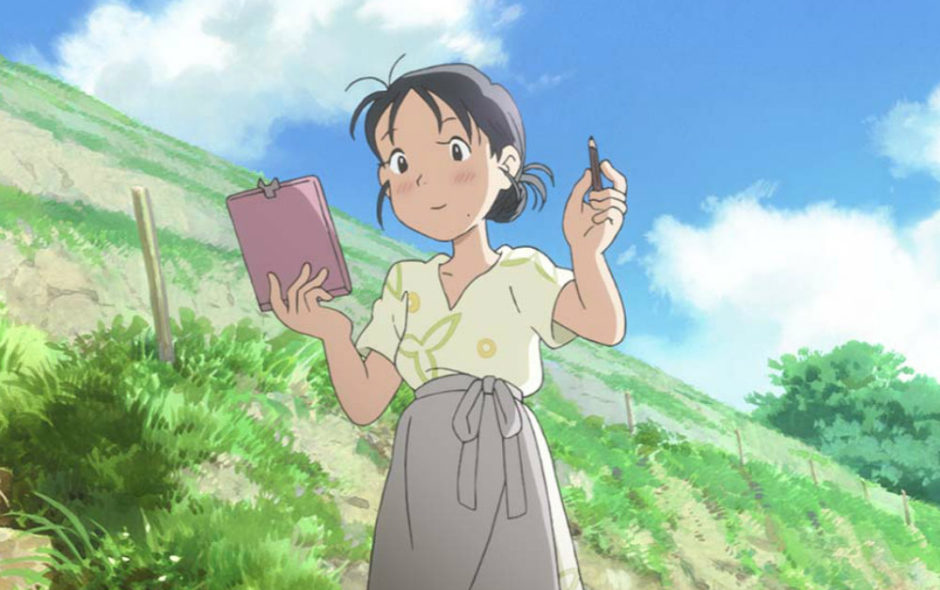American Second World War films are typically – and not surprisingly – from the perspective of the Allied forces. They’re usually gritty, grey, and dutifully depressing. Normalcy and peace are shown strikingly through warm, saturated colour. Japanese films offer a refreshingly different take.
In This Corner of the World shows us a Second World War that is neither about the winning side — it’s set in a small village near Hiroshima — nor one that relies on extreme contrast to show us the binary between peace and war. Like its forebear, the Studio Ghibli animated film Grave of the Fireflies, In This Corner of the World is more subtle and quietly beautiful, it presents an underrepresented perspective of an overrepresented slice of history.
The animated film is based off the manga by Fumiyo Kouno, and directed by Sunao Katabuchi, a former assistant director on Kiki’s Delivery Service. It begins before the war and takes us right into it, raids and all. The colour palette here is muted: earthy browns and greens help relax the viewer so that they can come to understand the scatterbrained, dreamy thought process of the protagonist, a young wife named Suzu (Rena Nounen). After marrying Shusaku (Yoshimasa Hosoya), Suzu relocates to her in-laws’ residence, where she is gently mocked by her new family for her spaciness. But Suzu is also conscientious, a resplendent visual artist and a hard worker.
Suzu’s soft-spoken, creative energy slowly but assuredly defines the look and feel of the film. It excels at blurring the line between reality and her unique way of looking at the world. Her poetic descriptions of waves in the lake resembling white rabbits become actualized on the screen as she visualizes and then paints them in watercolour, offer an inspiring point of view, one that champions the nurturing value of surrounding nature.
Even after the war becomes a regular, disruptive part of the family’s life, causing much misery and daily sources of quotidian frustration, Suzu’s gentle outlook retains its creative core. For her, bomb explosions in the sky resemble splotches of paint. The increasingly dire rations of food become a challenge as ancient recipes are utilized to make the most of scarce resources. The animation deftly mirrors Suzu’s perspective, and she often dreams of alternative life paths she could have taken — like marrying a childhood friend, instead of Shusaku — these digressions are unfortunately not explained very well, and for the first hour they make the film more confusing than interesting. To muddle the first half of the story even further, one too many characters are introduced through interactions that have little narrative momentum.
The film is essentially a series of mini-episodes of life during wartime — Suzu’s move to her new village, a trek to a different town, an afternoon visit to the army base to see her husband, housework spats with her proud and bossy sister-in-law, Keiko — and they work best when singular moments are allowed to dominate both the frame and the story. A devastating tragedy at the hands of Suzu near the end of the second act, for example, causes the family much grief, and her thoughts are harrowingly animated as she imagines alternate ways the event could have played out to avoid such misfortune. Katabuchi’s distinct method in bringing the protagonist’s free-floating, over-imaginative thoughts to life through animation help turn In This Corner of the World into an empathetic and colourful picture.
Originally published in The National Post (August 18, 2017).

